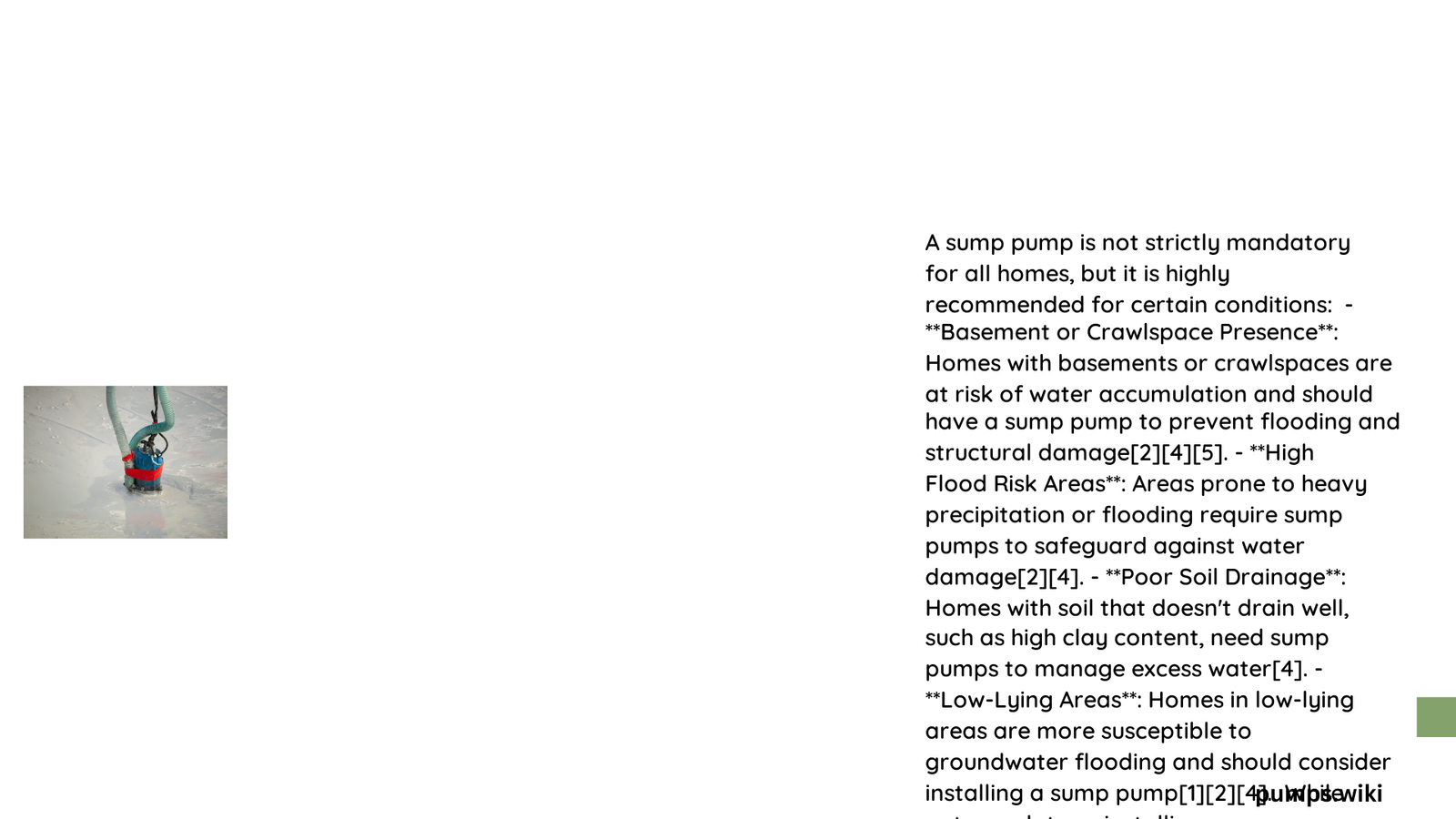Sump pumps are critical water management systems that protect homes from potential water damage, flooding, and moisture-related issues. While not universally mandatory, their installation depends on specific local building codes, geographical location, soil conditions, and potential water table risks. Homeowners must understand regional regulations and assess their property’s unique drainage needs to determine whether a sump pump is necessary for comprehensive water protection.
What Determines Sump Pump Mandatory Status?
Are Local Building Codes Crucial?
Local building codes play a pivotal role in determining sump pump requirements. Different jurisdictions have varying regulations that homeowners must navigate:
- Municipal Regulations: Each city or county may have unique requirements
- Geographical Considerations: Flood-prone areas often have stricter guidelines
- Soil and Water Table Conditions: High groundwater regions typically mandate sump pump installation
How Do Residential Codes Impact Sump Pump Installation?
The International Residential Code (IRC) provides comprehensive guidelines for sump pump installations:
| Code Requirement | Specification |
|---|---|
| Sump Pit Depth | Minimum 24 inches |
| Pit Width | At least 18 inches |
| Discharge Distance | Minimum 10 feet from foundation |
| Electrical Standards | GFCI protected outlet recommended |
What Factors Influence Mandatory Installation?
Several critical factors determine whether a sump pump becomes mandatory:
- Groundwater Levels
- Properties with high water tables
- Areas experiencing frequent flooding
-
Regions with poor natural drainage
-
Foundation Type
- Basements more likely to require sump pumps
- Crawl spaces with moisture issues
- Homes built in low-lying areas
Can Homeowners Avoid Sump Pump Requirements?
While complete avoidance might be challenging, homeowners can explore alternatives:
- Professional hydrological assessment
- Advanced drainage solutions
- Landscape grading improvements
- French drain installations
What Are Potential Consequences of Non-Compliance?
Ignoring local sump pump regulations can lead to:
- Significant property damage
- Potential legal penalties
- Voided home insurance claims
- Reduced property value
Expert Recommendations for Sump Pump Installation

How Should Homeowners Approach Sump Pump Requirements?
- Conduct Local Code Research
- Contact municipal building department
- Review specific regional requirements
-
Understand potential exemptions
-
Professional Consultation
- Hire certified home inspector
- Consult with drainage experts
-
Get comprehensive property assessment
-
Consider Long-Term Protection
- Evaluate potential water damage risks
- Invest in quality sump pump systems
- Implement regular maintenance
Conclusion
While sump pumps are not universally mandatory, they represent a critical investment in home protection. Homeowners must carefully evaluate their specific circumstances, local regulations, and potential water-related risks to make informed decisions about sump pump installation.
Key Takeaways
- Sump pump requirements vary by location
- Local building codes are primary determinants
- Professional assessment is recommended
- Protection against water damage is paramount
Reference:
– International Residential Code
– EPA Indoor airPLUS Program
– Department of Energy Zero Energy Ready Home
